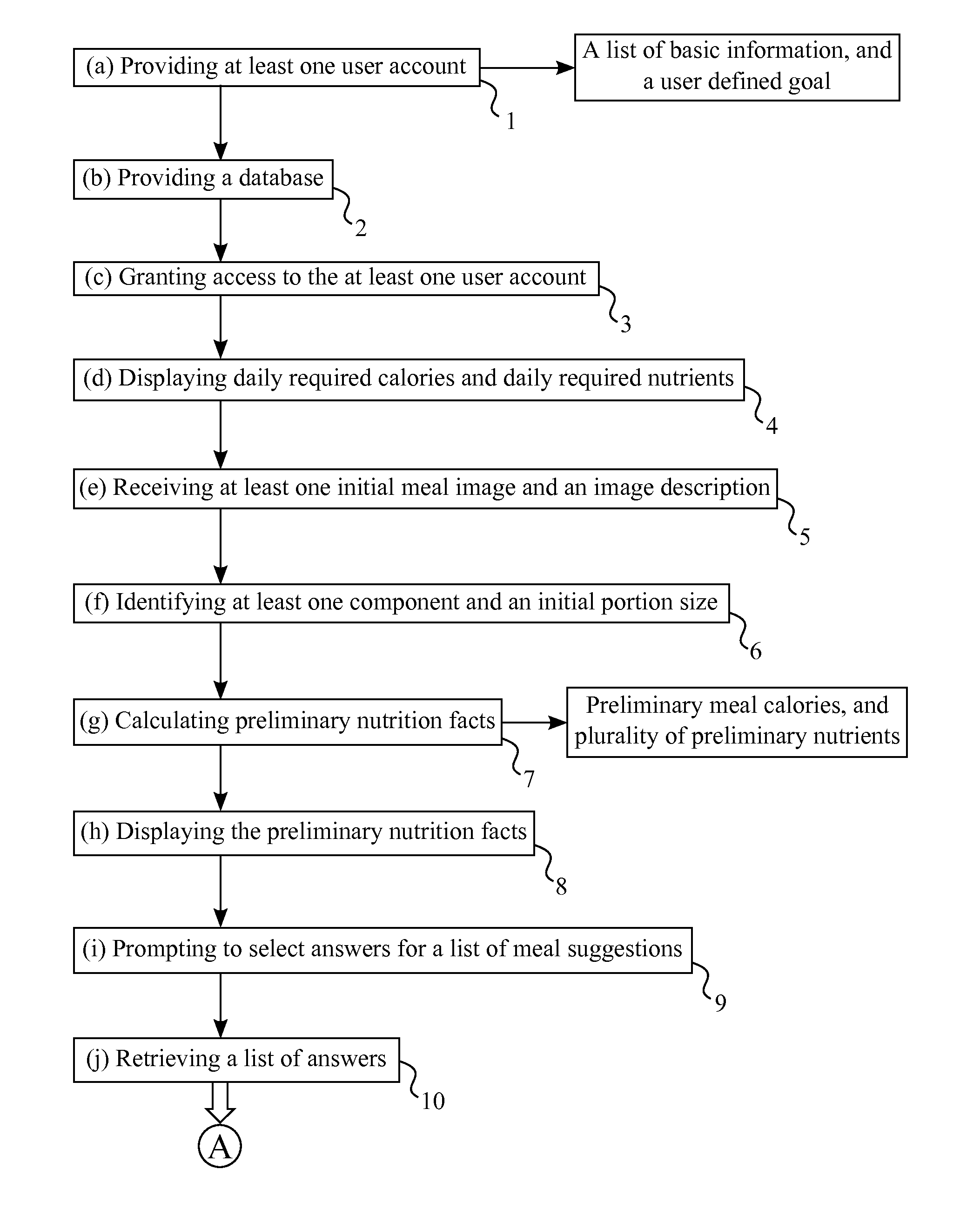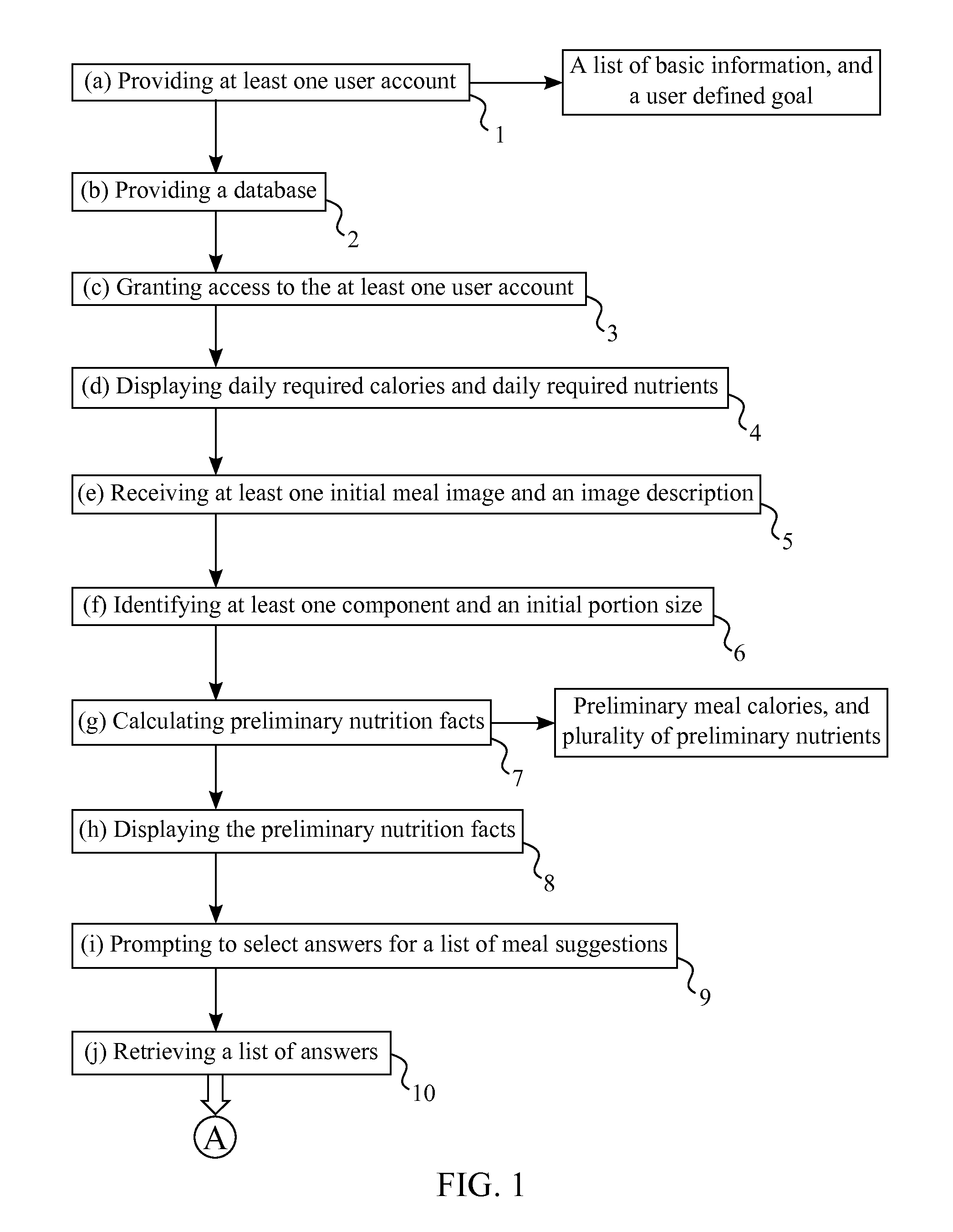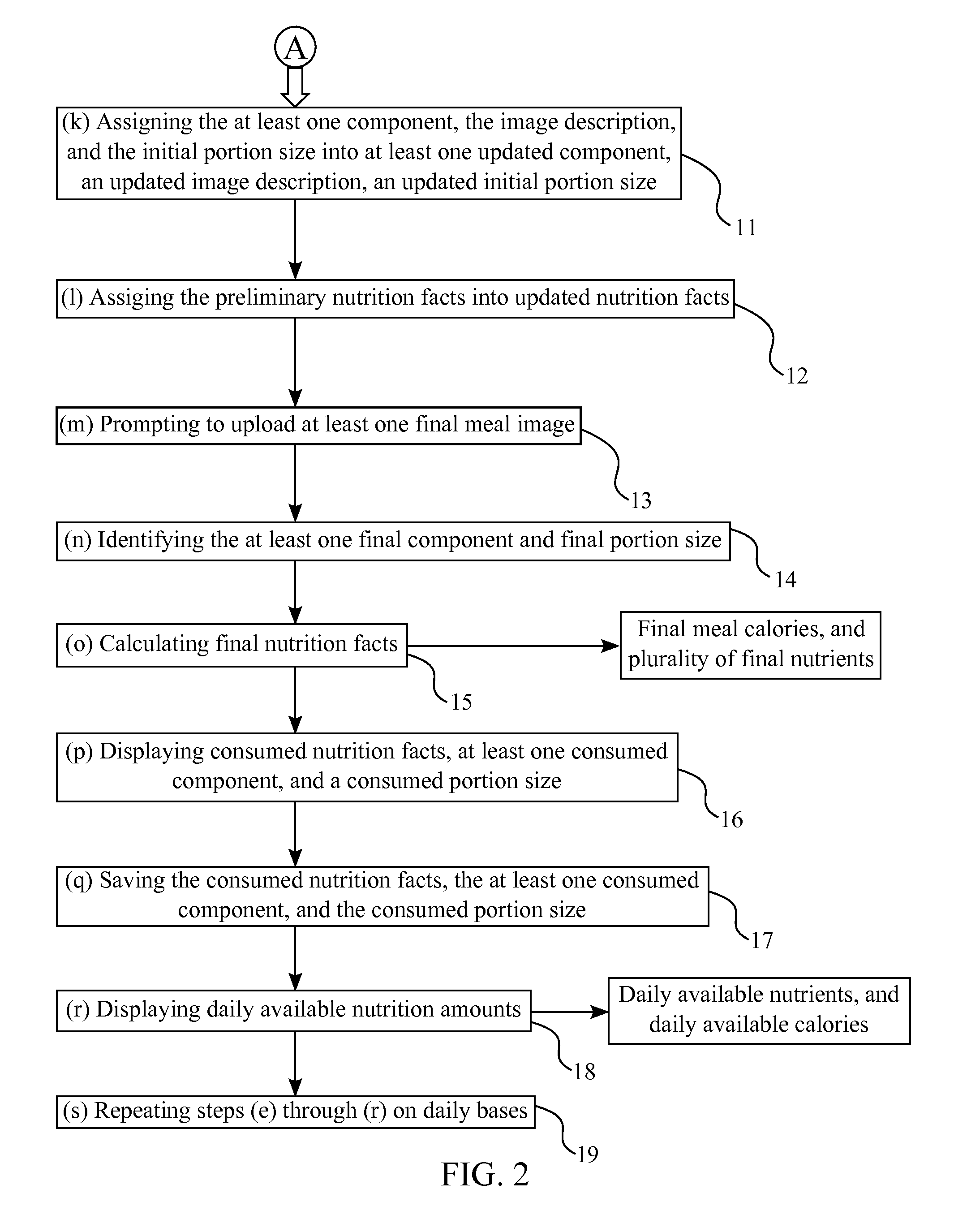Method of Monitoring Nutritional Intake by Image Processing
a nutritional intake and image processing technology, applied in the field of nutritional intake monitoring, can solve the problems of limited methods, cumbersome, inconvenient, and impractical user input, and achieve the effects of improving the quality of li
- Summary
- Abstract
- Description
- Claims
- Application Information
AI Technical Summary
Benefits of technology
Problems solved by technology
Method used
Image
Examples
example 1
[0030]The unit dimensions of a chicken breast: 5 in×2 in×1 in
[0031]The preliminary meal volume: 5 in×2 in×1 in=10 in3
[0032]The at least one specific weight calculating constant for chicken breast: 1.66 in3 per oz
[0033]The preliminary meal weight: 10 in3 / 1.66 in3 per oz=6 oz
[0034]Then the preliminary meal calories are calculated from the preliminary meal volume and at least one specific calorie calculating constant from the calorie calculating constants. Similar to the at least one specific weight calculating constant, the at least one specific calorie calculating constant is also correlated with the at least one component. More specifically, the present invention retrieves the at least one specific calorie calculating constant from the database (step 74), and then the preliminary meal volume is divided by the at least one specific calorie calculating constant to obtain the preliminary meal calories (step 75). Following is an example that illustrates the calculation process of the ...
example 2
[0035]The unit dimensions of a chicken breast: 5 in×2 in×1 in
[0036]The preliminary meal volume: 5 in×2 in×1 in=10 in3
[0037]The at least one specific calorie calculating constant for chicken breast: 0.07 in3 per calorie
[0038]The preliminary meal calories: 10 in3 / 0.07 in3 per calorie=143 calories
[0039]The present invention then calculates a preliminary caloric density, where the preliminary meal calories are divided by the preliminary meal weight to attain the preliminary caloric density (step 76). The preliminary caloric density is a measurement of the average calories per unit weight of the at least one component. The preliminary caloric density provides platform for the user about how much food can be consumed while staying within a specific amount of calories. For example, if the preliminary caloric density is low within a food item, the user can consume bigger portion of that food item and stay within the specific amount of calories. If the preliminary caloric density is high wi...
PUM
 Login to View More
Login to View More Abstract
Description
Claims
Application Information
 Login to View More
Login to View More - R&D
- Intellectual Property
- Life Sciences
- Materials
- Tech Scout
- Unparalleled Data Quality
- Higher Quality Content
- 60% Fewer Hallucinations
Browse by: Latest US Patents, China's latest patents, Technical Efficacy Thesaurus, Application Domain, Technology Topic, Popular Technical Reports.
© 2025 PatSnap. All rights reserved.Legal|Privacy policy|Modern Slavery Act Transparency Statement|Sitemap|About US| Contact US: help@patsnap.com



